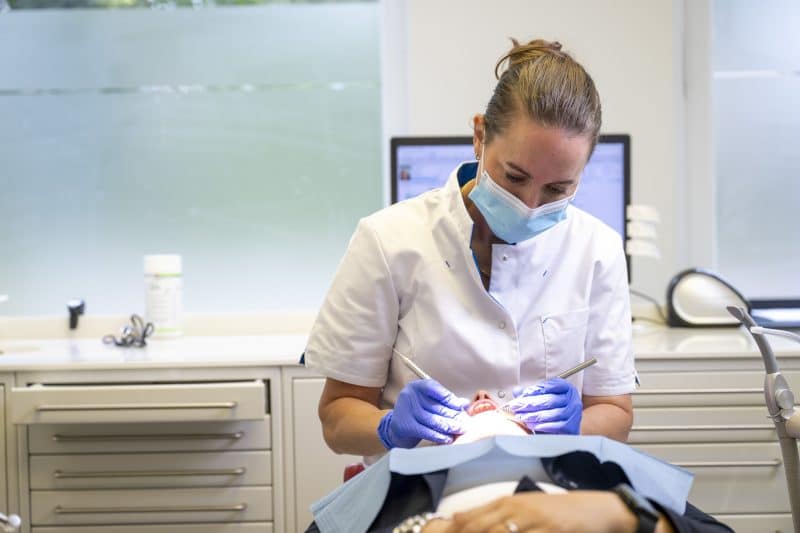X-rays
X-rays help the dentist make the correct diagnosis. Dental abnormalities such as inflammation, cavities (caries) and other abnormalities of the teeth are more visible. Thus, with the help of X-rays, the dentist can better examine the health of your teeth and identify and solve problems in a timely manner.
X-rays use a minimal amount of radiation.
Types of X-rays:
There are several types of x-rays in dentistry, all of which have their own purpose.
- Bite-wings are small overview photographs of the molars of the teeth. The dentist takes one photograph of the left side and one photograph of the right side. These photos show the crown portion of the molars: the part you can see for yourself in your mouth. In addition, a small portion of the roots and surrounding bone can be seen. Bite-wings are great for early detection and nipping in the bud the development of possible future problems. The frequency for making bite-wings is determined individually. This depends on the state of dental health and the patient’s age.
- A solo shot is taken when a particular tooth needs further examination. This type of photograph shows the entire tooth: the crown area, the root area and the area around the root tip. In the area around the root tip, for example, the dentist may observe inflammation.
- An OPG (orthopantomogram) is done to get an overview of all the teeth in the upper and lower jaws at once. Information can be obtained this way regarding missing or crooked teeth, wisdom teeth, root remnants, inflammation, etc. The jaw joint, nasal sinus and the course of the nerve of the mandible can also be assessed on this photograph.
X-rays during pregnancy
Even though taking an X-ray during pregnancy is safe, we prefer to wait to take an X-ray until after pregnancy. In case of acute pain or inflammation, a photograph may be necessary, the dentist will consult with you. Don’t worry, the amount of radiation you receive is very small and will not come close to the unborn foetus. Other treatments requiring an X-ray will be postponed until after pregnancy.

